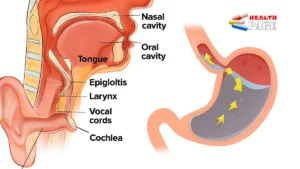7 Proven Ways to Get Tinnitus Relief Fast
If you’re living with tinnitus, you know how exhausting it can be. That persistent ringing, buzzing, whooshing, or humming in your ears can make concentrating, sleeping, and even enjoying quiet moments feel impossible. The good news? There are practical, research-backed ways to get tinnitus relief fast — and while there isn’t a single cure for tinnitus, the right strategies can dramatically reduce the intensity and help you feel more in control. In this guide, we’ll walk you through seven proven methods for quick relief, longer-term management, and a calmer mind. We’ll also clarify what tinnitus is, the difference between common tinnitus and pulsatile tinnitus, and what to discuss with your doctor about tinnitus treatment options.
Note: This article is for information and support only and is not a substitute for medical advice. If your tinnitus is sudden, accompanied by hearing loss, dizziness, ear pain, or is pulsatile (a rhythmic whooshing in time with your heartbeat), seek medical evaluation promptly.
What Is Tinnitus?
Tinnitus is the perception of sound without an external source. People often describe it as:
- Ringing, buzzing, hissing, humming, clicking, or whooshing
- Constant or intermittent
- In one ear or both
- Soft, moderate, or loud
- More noticeable in quiet rooms or at night
While tinnitus can be frustrating, it’s incredibly common. It can develop after loud noise exposure, age-related hearing loss, earwax buildup, certain medications, jaw tension, neck strain, high stress, or cardiovascular issues. Most of the time, tinnitus isn’t dangerous — but it is a signal to pay attention to your hearing health and overall well-being.
A quick note on pulsatile tinnitus
Pulsatile tinnitus is a rhythmic sound that often matches your heartbeat. Unlike standard tinnitus, it can sometimes indicate an underlying vascular or anatomical issue, like high blood pressure or changes in blood flow near the ear. If you have pulsatile tinnitus, it’s wise to consult a healthcare professional for a thorough evaluation.
Can You Really Get Tinnitus Relief Fast?
Yes — relief is possible. While long-term improvement comes from addressing root causes (hearing loss, stress, jaw alignment, etc.), many people find fast, meaningful relief from a combination of sound therapy, relaxation techniques, and small lifestyle adjustments. The seven methods below are practical, easy to try, and can be used together for best results.
1) Use Smart Sound Therapy (Masking and Matching)
Sound therapy is one of the most effective ways to reduce the perception of tinnitus quickly. It works by gently “masking” the tinnitus with neutral, calming sounds or by “matching” the pitch of your tinnitus to desensitize your brain over time.
How to try it:
- White noise or brown noise: Use a bedside machine, fan, or app. Brown noise is deeper and can feel less harsh than white noise.
- Nature sounds: Ocean waves, rain, or forest ambience can soothe the nervous system while masking tinnitus.
- Personalized tinnitus matching: Some apps let you match your tinnitus pitch and create tailored masking sounds. This can help your brain focus less on the tinnitus signal.
Pro tips:
- Keep the volume just below your tinnitus so your brain learns to tune it out, rather than drown it.
- Use sound therapy during focused work, reading, or bedtime to lower stress and reduce the “signal” your brain pays attention to.
Real-life example: “Whenever my tinnitus flares at night, I put on gentle rain sounds at low volume. Within 10 minutes, I’m less focused on the ringing and can drift off.”
Best for:
- People who need fast relief at bedtime
- Those working in quiet environments where tinnitus becomes louder
- Anyone wanting a low-risk, non-medication approach
2) Tame the Stress Response in Minutes (Breathing, Relaxation, and Biofeedback)
Tinnitus and stress often fuel each other. Anxiety makes tinnitus seem louder, and tinnitus increases stress — a vicious cycle. Calming your nervous system can reduce both the intensity and your reaction to the sound quickly.
Try this 2-minute breathing routine:
- Inhale gently through your nose for 4 seconds
- Hold for 4 seconds
- Exhale slowly for 6–8 seconds
- Repeat for 2–5 minutes, focusing on the sensation of the breath
Other fast relaxation techniques:
- Progressive Muscle Relaxation (PMR): Tense and release each major muscle group from toes to forehead.
- Guided imagery: Close your eyes and visualize a peaceful place with ambient sounds masking your tinnitus.
- Biofeedback apps or wearables: These help you see your stress response in real time and nudge you toward calmer breathing patterns.
Real-life example: “During a flare-up at work, I step away for three minutes of slow exhale breathing. The ringing doesn’t disappear, but my shoulders drop, my jaw unclenches, and it fades into the background.”
Best for:
- People whose tinnitus spikes with stress, caffeine, or lack of sleep
- Those who want tools they can use anywhere — office, commute, bedtime
3) Address Ear and Jaw Triggers (Earwax, TMJ, and Posture)
Sometimes the fastest tinnitus relief comes from fixing a physical trigger.
Earwax:
- Impacted earwax can make tinnitus louder. A healthcare professional can check and safely remove it if needed.
- Avoid cotton swabs, which can push wax deeper.
TMJ and jaw tension:
- The temporomandibular joint (TMJ) sits close to the ear. Clenching or misalignment can aggravate tinnitus.
- Quick self-check: Open and close your mouth. Do you hear clicking? Do you clench? Consider a soft night guard (ask your dentist) and jaw relaxation.
- Try gentle jaw stretches: Slow open-close, side-to-side movements, and massaging the jaw muscles in front of the ears.
Neck and posture:
- Forward head posture and tight neck muscles can heighten tinnitus.
- Try “chin tucks”: Sit tall, gently draw your head straight back (double-chin motion), hold 5 seconds, repeat 10 times. Add gentle neck stretches.
Real-life example: “After months of ringing, my dentist spotted jaw clenching. A night guard plus daily jaw stretches reduced my tinnitus intensity within weeks.”
Best for:
- People who clench jaws, have desk jobs, or wake with jaw soreness
- Those with sudden increases after ear fullness or wax buildup
4) Optimize Your Sound Environment for Sleep
Sleep deprivation makes tinnitus feel much louder. The right nighttime environment can create immediate relief and support long-term improvement.
Bedtime setup:
- Layered sound: Use a low-level sound machine or app with steady audio (rain, fan, brown noise) to cover quiet moments when tinnitus is most obvious.
- Comfortable ear-level speakers: Pillow speakers or a small bedside speaker help you listen without headphones.
- Consistent sleep routine: Aim for the same sleep/wake times, even on weekends.
Before-bed wind-down:
- Dim lights and avoid stimulating screens 60–90 minutes before bed.
- Try gentle yoga, stretching, or a warm bath to relax muscles that can worsen tinnitus.
- Limit alcohol late at night — it can disrupt sleep and amplify tinnitus in the early morning.
Supplements and sleep:
- Some people find magnesium glycinate in the evening supports sleep quality. Always consult your clinician first if you have health conditions or take medications.
Real-life example: “I set my sound machine to ocean waves and read a light novel for 15 minutes. My mind relaxes, and tinnitus fades to the background as I fall asleep.”
Best for:
- Anyone whose tinnitus spikes at night
- People waking up in the middle of the night focused on the ringing
5) Make Smart Lifestyle Tweaks That Add Up Fast
Small, consistent changes can reduce tinnitus intensity within days to weeks, especially when combined.
Hearing protection (the right way):
- Use high-fidelity earplugs in noisy environments (concerts, power tools, stadiums).
- Avoid overprotecting in everyday quiet settings — excessive silence can make tinnitus more noticeable when you remove the plugs.
Caffeine and alcohol:
- Some people are sensitive to caffeine or alcohol. Consider a two-week experiment reducing intake and track your symptoms.
- Hydrate well; dehydration can worsen perceived loudness for some.
Movement and blood flow:
- Regular, moderate exercise can improve circulation and reduce stress — both helpful for tinnitus.
- Even 20–30 minutes of brisk walking most days can help.
Medication check:
- Some medications have tinnitus as a potential side effect. If you suspect this, talk to your healthcare provider before making any changes.
Hydration and salt:
- Excessive salt can influence fluid balance in the inner ear for some individuals. Try a light reduction and see if it helps.
Real-life example: “I switched to half-caf coffee and started walking every morning. Within a week, the ‘edge’ of my tinnitus softened, and my mood improved.”
Best for:
- People noticing flare-ups after certain drinks, foods, or noisy events
- Anyone wanting safe, accessible changes to support overall tinnitus relief
6) Use Professional Support: Hearing Aids, CBT, and Medical Evaluation
When tinnitus is persistent or distressing, professional care can accelerate relief — often more quickly than going it alone.
Hearing evaluation:
- Many people with tinnitus have some degree of hearing loss, even if they haven’t noticed it.
- Hearing aids can reduce tinnitus by improving overall sound input, giving your brain more meaningful sounds to focus on instead of the ringing.
Sound therapy devices:
- Some devices combine hearing aids with built-in sound generators tailored for tinnitus relief.
Cognitive Behavioral Therapy (CBT) for tinnitus:
- CBT helps reduce the distress and anxiety linked to tinnitus. It doesn’t “cure” the sound, but it changes your brain’s reaction — a big win for quality of life.
- Improvements can occur within weeks, making it a strong option for fast and lasting relief.
Medical evaluation:
- If you have pulsatile tinnitus, sudden hearing changes, ear pain, or dizziness, consult a clinician. Underlying issues like ear infections, vascular changes, or TMJ dysfunction can be addressed directly.
- Bring a symptom log: when tinnitus is loudest, triggers, foods/drinks, stressors, and sleep patterns. This speeds up diagnosis and care.
Real-life example: “After a hearing test revealed mild high-frequency loss, my audiologist fitted me with hearing aids with sound therapy features. Within a month, my tinnitus felt 50% less intrusive.”
Best for:
- Persistent, distressing tinnitus
- People with suspected hearing loss or work-noise exposure
- Those with pulsatile tinnitus needing medical evaluation
7) Build a Personal Tinnitus Plan You Can Stick To
Tinnitus relief builds from small, consistent actions. A personalized plan keeps you grounded on tough days and helps you notice steady progress.
Create your quick-relief routine:
- Sound: Low-volume masking (rain, brown noise)
- Breath: 2–5 minutes of slow exhale breathing
- Body: Gentle neck/jaw stretches
- Mindset: Brief reassurance — “This is a sound my brain can tune out.”
Track triggers and wins:
- Use a simple note app to record what helps (e.g., nature sounds, evening walk) and what hinders (e.g., late caffeine, poor sleep).
- Seeing patterns empowers you to make changes that matter.
Set realistic goals:
- Aim for 10–20% improvement in distress within 2–4 weeks. That’s a meaningful, motivating milestone.
- Reward consistency: Celebrate nights you fall asleep faster or days you’re less focused on the sound.
Build your environment:
- Keep earplugs for loud venues in your bag.
- Add a bedside sound machine and a comfy reading setup.
- Save a favorite relaxation playlist for tough moments.
Real-life example: “I made a checklist: sound therapy, breathing, evening stretch, 20-minute walk. Checking the boxes daily made the ringing feel less powerful — like I finally had tools that worked.”
Best for:
- Anyone wanting structure without overwhelm
- People who thrive with simple, repeatable routines
Quick Comparison: Fast-Acting Tinnitus Relief Options
| Method | What It Does | How Fast It Helps | Best For | Bonus Tips |
|---|---|---|---|---|
| Sound Therapy (masking) | Reduces perceived loudness by adding neutral background sound | Immediate to minutes | Bedtime, quiet offices | Keep volume just below tinnitus level |
| Breathing/Relaxation | Calms stress response that amplifies tinnitus | Minutes | Stress-triggered spikes | Try 4-4-8 breathing for 2–5 minutes |
| Jaw/Neck Care | Eases musculoskeletal triggers | Days to weeks; sometimes same-day | Jaw clenchers, desk workers | Gentle stretches; consider dental consult |
| Sleep Optimization | Lowers nighttime perception and daytime reactivity | First night to 1–2 weeks | Insomnia, early-morning spikes | Use brown noise; consistent schedule |
| Lifestyle Tweaks | Reduces common triggers (caffeine, alcohol, noise) | Days to weeks | Sensitive to diet/stimuli | Try 2-week experiments and track |
| Hearing Aids/Sound Devices | Restores sound input; reduces brain focus on tinnitus | Weeks | Hearing loss, long-term relief | Ask about built-in sound therapy |
| CBT/Professional Care | Reduces distress and reactivity | Weeks | High anxiety, persistent distress | Combine with sound therapy for synergy |
Frequently Asked Questions
Is tinnitus permanent?
- Not always. For many, it fluctuates or improves over time. Even when it persists, its impact can be significantly reduced with the right strategies.
What is the fastest way to get tinnitus relief?
- Sound therapy plus short relaxation exercises often provide the quickest relief. Many people notice benefits within minutes.
What about supplements or vitamins?
- Evidence is mixed. Some find magnesium helpful for sleep, which indirectly eases tinnitus distress. Always consult your clinician, especially if you have medical conditions or take medications.
What is pulsatile tinnitus?
- A rhythmic sound in sync with your heartbeat. Because it may relate to blood flow or vascular issues, it deserves medical evaluation.
Is there a tinnitus cure?
- There’s no universal cure yet, but treatments and strategies can reduce loudness and — more importantly — your brain’s reaction, which restores quality of life.
A Gentle, Step-by-Step Action Plan
Today:
- Pick one sound therapy track you like (rain, ocean, brown noise).
- Practice 3 minutes of slow exhale breathing.
- Do a quick jaw/neck stretch routine.
This week:
- Create a bedtime routine with a sound machine and screen-free wind-down.
- Try a two-week caffeine/alcohol reduction experiment.
- Schedule a hearing evaluation if you haven’t had one recently.
This month:
- Consider CBT for tinnitus if distress remains high.
- Reassess your plan, keep what works, and drop what doesn’t.
- Celebrate progress: even a small reduction in distress is a real win.
Final Thoughts: You’re Not Alone — Relief Is Possible
Living with tinnitus can feel isolating, but millions manage it successfully every day. With a few practical tools — sound therapy, relaxation, better sleep, smart lifestyle tweaks, and professional support when needed — you can get tinnitus relief fast and build confidence that you can handle flare-ups. Whether you’re just starting to explore tinnitus treatment options or you’ve tried a few things without success, keep going. The right combination is out there, and you deserve the quiet, calm, and control that come with it.


